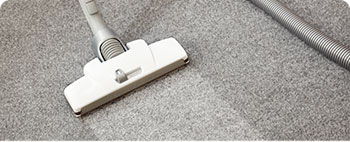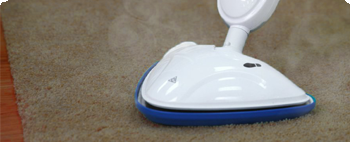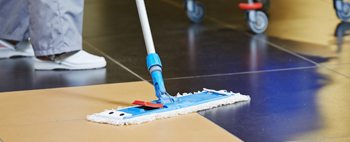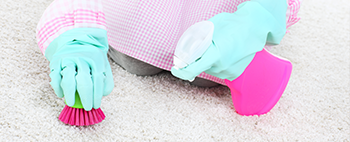Clean and Refresh Your Window Sills: Mould Removal
Posted on 02/07/2025
Clean and Refresh Your Window Sills: Mould Removal
Mould on window sills is not just unsightly; it can also cause health concerns and long-term damage to your home. Whether you have timber, UPVC, composite, or aluminum windows, removing mold from window sills is essential for a healthy and aesthetically pleasing living space. In this comprehensive guide, we'll walk you through everything you need to know to clean and refresh your window sills with effective mould removal techniques. From identifying the causes of mould growth to the best cleaning methods, preventative measures, and more, you'll learn how to keep your window sills spotless and mould-free.
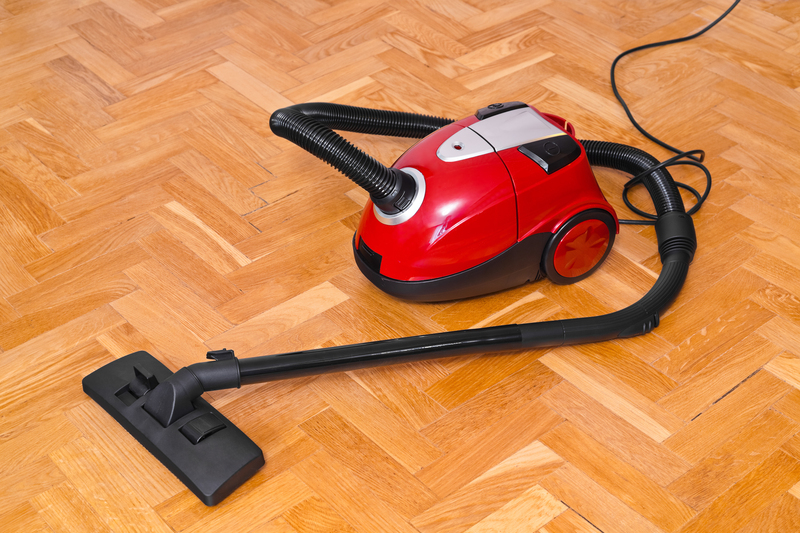
Understanding Why Mould Grows on Window Sills
Mould thrives in damp, poorly ventilated areas. Unfortunately, window sills are particularly prone to moisture accumulation, making them a hotspot for mold growth. Here are the most common reasons why you'll find window sill mould in your home:
- Condensation: When warm indoor air meets the cooler surface of window sills, condensation forms, creating the perfect environment for mould spores to grow.
- Poor ventilation: Inadequate airflow allows moisture to linger, increasing the chance of mold infestation on window surrounds.
- Leaking windows or frames: Faulty seals, cracks, or leaks allow rain and humidity to enter, especially affecting wooden window sills which are more porous.
- Lack of sunlight: Shaded or north-facing windows that rarely get direct sunlight are at a higher risk because sunlight helps eliminate some mould spores naturally.
- Humidity indoors: Homes with high humidity, such as after showers or cooking, tend to have more window mould issues due to the excess moisture in the air.
Recognizing these causes is the first step in successfully removing and preventing mold on window sills.
Health Risks Associated with Mouldy Window Sills
You might think a bit of black or green around the windows is harmless, but window sill mould can have negative health implications. Here's why it's vital to address it quickly:
- Type of mould: Many sills develop black mould (Stachybotrys chartarum), a toxic mould that can cause respiratory issues.
- Allergic reactions: Mold spores can provoke allergies, causing sneezing, runny nose, and itchy eyes, especially in sensitive individuals.
- Asthma risks: People with asthma may find their symptoms worsen due to indoor mould spores.
- Long-term exposure: Prolonged contact with mould can result in headaches, fatigue, and in severe cases, chronic sinus infections.
Don't underestimate the impact of ignoring mould on window sills. Timely cleaning and regular maintenance are essential for safeguarding both your upvc and wooden window sills and your family's well-being.
Essential Supplies for Window Sill Mould Removal
Before you start your window sill cleaning and mould removal project, gather the following supplies for best results:
- Protective gloves and safety goggles: Protect yourself from direct contact and accidental splashes.
- Face mask: Prevent inhaling airborne mould spores.
- Old toothbrush or soft scrubbing brush: Small bristles help remove mould from crevices and corners.
- Microfiber cloths or paper towels: These are useful for wiping and absorbing moisture without scratching surfaces.
- Spray bottle: For applying cleaning solutions directly to affected areas.
- White vinegar or hydrogen peroxide: Both are natural mould removers, effective against most household mould types.
- Baking soda (optional): Works as a gentle abrasive and natural deodorizer.
- Commercial mould cleaner (optional): Useful for severe cases or stubborn mould stains.
Always ensure proper ventilation while cleaning by opening doors and windows, or use a fan to circulate air.
Step-by-Step Guide: How to Clean Mould from Window Sills
1. Prepare the Area
Move curtains, blinds, or any decorative items away from the window sill. Lay down an old towel or plastic sheet to protect your floors and walls from drips and splashes.
2. Safety First
Wear protective gloves, goggles, and a face mask before starting the cleaning process.
3. Remove Surface Debris
Using a dry microfiber cloth or vacuum with a nozzle attachment, gently remove dust, dirt, and loose spores from the window sill and surrounding frame.
4. Apply Mould Cleaning Solution
-
For wooden window sills:
- Mix a solution of equal parts white vinegar and water or use hydrogen peroxide (3% solution).
- Spray or dab the solution onto the affected area and let it sit for 10-15 minutes.
-
For UPVC or painted sills:
- You can use undiluted vinegar or a mild commercial cleaner.
- Avoid harsh bleach or abrasives as these can damage the finish.
5. Scrub the Mould Off
Using a toothbrush or small scrubbing brush, gently scrub the mouldy areas, paying special attention to crevices and corners where black mould on window sills often accumulates.
6. Wipe Clean and Dry
Wipe down the cleaned areas with a damp microfiber cloth, then immediately use a dry cloth or paper towel to remove excess moisture. Never leave the surface wet as this may encourage future mould growth.
7. Dispose of Cleaning Materials Safely
Place used cloths and towels into a plastic bag and dispose of them or wash them in hot water separately to prevent recontamination.
Natural Mould Removal Remedies for Window Sills
Many homeowners prefer eco-friendly solutions for mould removal from window sills. Here are some of the best natural alternatives:
- White vinegar: Kills 82% of mould species and is safe for all window sill materials. No rinsing required.
- Baking soda: Mix with water into a paste for gentle scrubbing action and additional odour control.
- Lemon juice: Acts as a mild disinfectant and leaves a fresh scent, suitable for light mould patches.
- Tea tree oil: Add a teaspoon to a cup of water for a potent, all-natural mould remover.
Tip: Test any cleaning solution on a small, hidden area first to ensure there is no discoloration or damage.
How to Prevent Mould Coming Back on Window Sills
After thorough window sill cleaning, prevention is key to keeping mold at bay. Implement these strategies:
- Improve ventilation: Open windows regularly or use exhaust fans in kitchens and bathrooms.
- Use dehumidifiers: Especially in high-moisture areas or during damp seasons.
- Repair window leaks: Seal cracks, replace faulty caulking, and ensure proper window installation.
- Wipe condensation daily: Keep microfiber cloths handy to remove moisture from your window sills after steamy activities.
- Regular cleaning schedule: Include your window sills in your weekly cleaning routine for early detection and mould control.
- Trim overgrown plants: Keep shrubs and climbers away from exterior window sills to increase sunlight exposure.
When to Call in the Professionals for Window Sill Mould Remediation
While most window sill mould problems can be tackled with home cleaning methods, there are times you'll need professional help:
- Large, persistent mould patches: If cleaning does not remove the mould or it recurs quickly, mould may be rooted in the wall or frame.
- Strong musty odours lingering: Indicates hidden or extensive mould colonies beyond the sill.
- Mould affecting allergies or health: Individuals with respiratory issues should avoid tackling large infestations themselves.
- Water ingress from structural damage: Professionals can repair leaks and treat underlying moisture problems.
A certified mould remediation expert will have the tools, commercial mould removers, and expertise to safely eliminate mould from all surfaces--including hard-to-access parts of your window sills.

Preventing Window Sill Mould -- Maintenance Checklist
- Check for moisture: Look for signs of condensation, leaks or faulty window seals at least once a season.
- Clean weekly: Wipe down window sills with a damp, then dry, cloth to remove dust and prevent spores from settling.
- Use anti-mould paint: For wooden window sills, repaint using an anti-fungal primer or paint as an extra protective layer.
- Keep sills clutter-free: Avoid placing potted plants or damp items directly on sills, as they can trap moisture.
- Check your gutters: Ensure that water from gutters and downpipes does not run onto exterior sills.
Conclusion: Enjoy Spotless, Healthy Window Sills
Mould on window sills can tarnish the beauty of your windows and pose real health hazards. With the right mould removal and cleaning methods, you'll be able to restore your window sills to their pristine condition and prevent future outbreaks. Remember to act quickly at the first sign of window sill mould for easier removal and lasting protection. Incorporate these tips into your regular home care routine, and your window sills will remain clean, fresh, and mould-free year round.
Frequently Asked Questions About Window Sill Mould Removal
Q: How often should I clean my window sills to prevent mould?
A: For most homes, weekly cleaning is sufficient. However, during damp or rainy seasons, daily moisture checks are recommended to catch condensation and wipe it away before mould can form.
Q: Can I use bleach to remove mould from window sills?
A: Bleach can kill surface mould but may damage paint or wooden sills. It's also less effective on porous surfaces where mould roots can persist. Natural cleaners like vinegar or commercial mould removers designed for use on window sills are safer alternatives.
Q: Is it safe to paint over window sill mould?
A: No. Painting over mould without removing it can trap moisture and worsen the problem. Always remove all visible mould and treat the area with an anti-mould solution before repainting.








